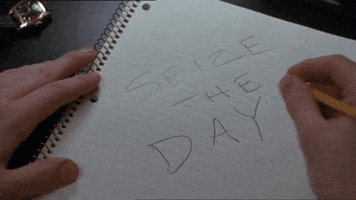It might seem like a no-brainer, but one of the most important keys to successfully and effectively learning a language is a regular, consistent study habit. Believe it or not, the key to building a good language learning habit lies in 4 easy steps.
If we want to be able to use another language, we need to train it just as we would our muscles through workouts at the gym. Just like any other long-term activity that will benefit us, however, part of the process is forming the habit of doing it and making it part of our lives.

By making space in our lives for studying the language, we are also integrating it into our daily routine, and making it part of ourselves, too through a regular habit of language learning.
One of the most famous myths about habit building is that it takes 28 days to start a habit. While in reality, science has proven that it takes 66 days to make a behaviour into an automatic habit, that doesn’t mean it’s any less possible.
This might seem like a long time to have to focus on creating a habit, but keep in mind that what we’re aiming for is a long-term new behaviour of learning.
The key to getting through to the 66-day barrier is setting short, easily achievable goals that are actually small habits themselves that set you up for success. Dubbed tiny-habits or micro-habits, these small habits form and build themselves into larger, more lasting long-term habits. (Watch a great video on the tiny-habit theory here.)
Here’s how you do it:
Set yourself a low bar
By setting yourself an easily achievable, small goal that you can accomplish and feel good about, you have very little excuse or obstacle to not do it.
Dip your toe into a new habit without overwhelming yourself is to decide on a first step. In this case, the first step might be to simply log on to Lingvist and take a quick look at the first card in your stack.
You don’t even have to do the card. Just log in and look.
Commit to it and be accountable
Commit to logging on once a day and looking at the card for a week. By all means, do the card if you want. Do five even. Do as many as you’d like, or do none at all. But log in each day.
You’ll at the very least feel a small amount of satisfaction that you made a decision to log in each day and did it without fail. Bonus good feelings if you did a few cards!
This good feeling will gradually encourage you to do a bit more each time you practice that micro-habit. You’ll make a small space in your life for the micro-habit, and as the habit expands, you’ll better accommodate it into your daily routine and can start to further build on the habit by adding a new tiny habit onto the end of it.
Expand it
After your first tiny-habit goal is achieved — in our example, the first seven days of at least just logging in and looking at the first card — choose a small way to expand it. Set yourself a time-limit after logging in, two minutes, for example. When you log in with your new daily micro-habit, now set a timer for 2 minutes and do as many cards as you want for the next two minutes.
Commit to this new two-minute time limit for the next seven days.

Keep building onto your micro-habits
As you build a micro-habit into your daily routine, add a new one at the end of it — like a link in a chain. With each small habit we add, we’re actually growing a larger habit that we can accommodate into our daily lives without feeling overwhelmed or setting ourselves up to fail.
What’s more motivating than that?
Language learning is a process, not an end-game. Approaching it like an ongoing process that gets more and more integrated into who you are and how you live your life will not only help you to become more fluent, but it will help you to make the language yours and express yourself in a way that’s truly you.
What tiny language learning habit will you set for yourself to start off 2017? We want to know!



